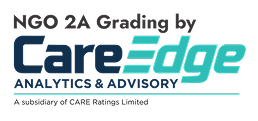Online Programmes Click here Vibrant Summit 2025 Click here

Online Programmes Click here Vibrant Summit 2025 Click here

ADMISSION ENQUIRY - 2025
Cloud Computing Essentials
GANPAT UNIVERSITY |
|||||||||||||||||||||||||||||||||||||||||||||||||||||||||||||||||||||||||||||||
|
FACULTY OF ENGINEERING AND TECHNOLOGY |
|||||||||||||||||||||||||||||||||||||||||||||||||||||||||||||||||||||||||||||||
|
Programme |
Bachelor of Technology |
Branch/Spec. |
Computer Science & Engineering (BDA/CS) |
||||||||||||||||||||||||||||||||||||||||||||||||||||||||||||||||||||||||||||
|
Semester |
VII |
Version |
1.0.0.1 |
||||||||||||||||||||||||||||||||||||||||||||||||||||||||||||||||||||||||||||
|
Effective from Academic Year |
2022-23 |
Effective for the batch Admitted in |
June 2019 |
||||||||||||||||||||||||||||||||||||||||||||||||||||||||||||||||||||||||||||
|
Subject code |
2CSE70E19 |
Subject Name |
Cloud Computing Essentials |
||||||||||||||||||||||||||||||||||||||||||||||||||||||||||||||||||||||||||||
|
Teaching scheme |
Examination scheme (Marks) |
||||||||||||||||||||||||||||||||||||||||||||||||||||||||||||||||||||||||||||||
|
(Per week) |
Lecture (DT) |
Practical (Lab.) |
Total |
CE |
SEE |
Total |
|||||||||||||||||||||||||||||||||||||||||||||||||||||||||||||||||||||||||
|
L |
TU |
P |
TW |
||||||||||||||||||||||||||||||||||||||||||||||||||||||||||||||||||||||||||||
|
Credit |
3 |
0 |
1 |
0 |
4 |
Theory |
40 |
60 |
100 |
||||||||||||||||||||||||||||||||||||||||||||||||||||||||||||||||||||||
|
Hours |
3 |
0 |
2 |
0 |
5 |
Practical |
30 |
20 |
50 |
||||||||||||||||||||||||||||||||||||||||||||||||||||||||||||||||||||||
|
Pre-requisites: |
|||||||||||||||||||||||||||||||||||||||||||||||||||||||||||||||||||||||||||||||
|
Operating system, Computer Network, Database Management Systems, Programming, Virtualization, Fundamentals of Microservices, Software Engineering approaches |
|||||||||||||||||||||||||||||||||||||||||||||||||||||||||||||||||||||||||||||||
|
Learning Outcome: |
|||||||||||||||||||||||||||||||||||||||||||||||||||||||||||||||||||||||||||||||
|
After completion of the course, student will be able to:
|
|||||||||||||||||||||||||||||||||||||||||||||||||||||||||||||||||||||||||||||||
|
Theory syllabus |
|||||||||||||||||||||||||||||||||||||||||||||||||||||||||||||||||||||||||||||||
|
Unit |
Content |
Hrs |
|||||||||||||||||||||||||||||||||||||||||||||||||||||||||||||||||||||||||||||
|
1 |
Fundamentals of Cloud Computing Concept of Cloud computing, Characteristics, Features and Applications, Cloud Architecture, Service models, Deployment models, Role of Cloud in Data Science domain |
4 |
|||||||||||||||||||||||||||||||||||||||||||||||||||||||||||||||||||||||||||||
|
2 |
Cloud Economics Service Level Objectives, Service Level Agreements (SLAs), Pricing, Billing, Accounting, Optimization, Cloud performance issues and measures |
5 |
|||||||||||||||||||||||||||||||||||||||||||||||||||||||||||||||||||||||||||||
|
3 |
Infrastructure Services on Cloud Introduction to Infrastructure, Virtualization, Hypervisors, Server virtualization, Storage Virtualization, Data Center Fundamentals, DB Cluster, Compute, Network and Storage Infrastructure, Database Services, Virtual Firewall and Security Groups |
10 |
|||||||||||||||||||||||||||||||||||||||||||||||||||||||||||||||||||||||||||||
|
4 |
Load Balancing and Autoscaling Need, Load balancing approaches, Load Balancer types, Load balancing algorithms, Round Robin Algorithm, Least Connections Algorithm, IP Hashing based Algorithms, Randomized Algorithms, Load balancing Vs auto-scaling, Auto scaling Policies and Algorithms, threshold-based Algorithm, Load Prediction based algorithm, QoS based Algorithm |
8 |
|||||||||||||||||||||||||||||||||||||||||||||||||||||||||||||||||||||||||||||
|
5 |
Distributed File Systems & Programing Distributed File Systems for Cloud, Map Reduce programing model, Google File Systems, Hadoop Distributed File System |
8 |
|||||||||||||||||||||||||||||||||||||||||||||||||||||||||||||||||||||||||||||
|
6 |
Cloud Security Identity & Access Management on Cloud, Understanding security, Issues of cloud security, Infrastructure security, Data Security, Access Management, Solutions |
8 |
|||||||||||||||||||||||||||||||||||||||||||||||||||||||||||||||||||||||||||||
|
7 |
Edge Computing Need and Model, Use cases, Drivers and Barriers, Edge Platforms & Computing Latency, Edge computing hardware architectures |
2 |
|||||||||||||||||||||||||||||||||||||||||||||||||||||||||||||||||||||||||||||
|
Self-Study: |
|||||||||||||||||||||||||||||||||||||||||||||||||||||||||||||||||||||||||||||||
|
Case study AND REAL CLOUD SERVICES Distributed File System, HDFS, DevOps |
|||||||||||||||||||||||||||||||||||||||||||||||||||||||||||||||||||||||||||||||
|
Practical content |
|||||||||||||||||||||||||||||||||||||||||||||||||||||||||||||||||||||||||||||||
|
Practical’s will be based on:
|
|||||||||||||||||||||||||||||||||||||||||||||||||||||||||||||||||||||||||||||||
|
Mooc Course |
|||||||||||||||||||||||||||||||||||||||||||||||||||||||||||||||||||||||||||||||
|
Course Name: AWS Academy Cloud Foundations (ACF) Link: https://www.awsacademy.com/servlet/servlet.FileDownload?file=0151K000003qL84QAE |
|||||||||||||||||||||||||||||||||||||||||||||||||||||||||||||||||||||||||||||||
|
Text Books |
|||||||||||||||||||||||||||||||||||||||||||||||||||||||||||||||||||||||||||||||
|
1 |
Barrie Sosinsky: "Cloud Computing Bible", Wiley-India. |
||||||||||||||||||||||||||||||||||||||||||||||||||||||||||||||||||||||||||||||
|
2 |
RajkumarBuyya, James Broberg, Andrzej M. Goscinski: "Cloud Computing: Principles and Paradigms", Wiley. |
||||||||||||||||||||||||||||||||||||||||||||||||||||||||||||||||||||||||||||||
|
Reference Books |
|||||||||||||||||||||||||||||||||||||||||||||||||||||||||||||||||||||||||||||||
|
1 |
Nikos Antonopoulos, Lee Gillam: "Cloud Computing: Principles, Systems and Applications", Springer. |
||||||||||||||||||||||||||||||||||||||||||||||||||||||||||||||||||||||||||||||
|
2 |
Ronald L. Krutz, Russell Dean Vines: "Cloud Security: A Comprehensive Guide to Secure Cloud Computing", Wiley-India. |
||||||||||||||||||||||||||||||||||||||||||||||||||||||||||||||||||||||||||||||
|
3 |
Tim Mather, Subra Kumara swamy, ShahedLatif, Cloud Security and Privacy: An Enterprise Perspective on Risks and Compliance, O'Reilly Media. |
||||||||||||||||||||||||||||||||||||||||||||||||||||||||||||||||||||||||||||||
|
Course Outcomes: |
|||||||||||||||||||||||||||||||||||||||||||||||||||||||||||||||||||||||||||||||
|
CO |
Description |
||||||||||||||||||||||||||||||||||||||||||||||||||||||||||||||||||||||||||||||
|
CO1 |
Understand the principles of Cloud Computing, Cloud Economics, DevOps & cloud platforms. |
||||||||||||||||||||||||||||||||||||||||||||||||||||||||||||||||||||||||||||||
|
CO2 |
Apply the appropriate Cloud Services to various scenarios. |
||||||||||||||||||||||||||||||||||||||||||||||||||||||||||||||||||||||||||||||
|
CO3 |
Deploy, manage and operate applications on scalable, highly available and fault-tolerant Cloud Platforms. |
||||||||||||||||||||||||||||||||||||||||||||||||||||||||||||||||||||||||||||||
|
CO4 |
Develop skills for implementing cloud solutions for various scenarios. |
||||||||||||||||||||||||||||||||||||||||||||||||||||||||||||||||||||||||||||||
|
Mapping of CO and PO:
|
|||||||||||||||||||||||||||||||||||||||||||||||||||||||||||||||||||||||||||||||






